Timeline
The Legend of Zelda, in what order to play the entire saga?
While waiting for Breath of the Wild’s sequel, we arrange Nintendo’s legendary saga from its first release on NES to play it in the right order.
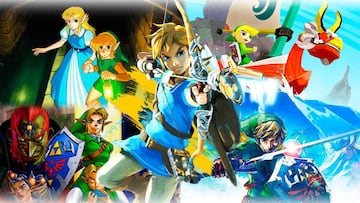
The Legend of Zelda is one of the most recognized sagas in the history of video games, and one of Nintendo’s hallmarks, second only to Super Mario. The series has taken a new boost in the current generation with the release of Breath of the Wild, The Legend of Zelda: Link’s Awakening remake, and The Legend of Zelda: Skyward Sword HD remaster. Many wonder how to get into the saga. And while there is no right answer, there are some ideas that can be followed to play the series in a logical order.
As usual in these articles, it is important to emphasize that the traditional way to play them is to follow their chronological order of release, starting with The Legend of Zelda on the NES and ending with Breath of the Wild. But if you're in the mood, you should know that Nintendo ordered the games and many of them connect or recall past events from other titles. So let's go over how to tackle this without getting lost along the way.
The franchise has three timelines that emanate from its main and official chronology, first presented in the Hyrule Historia. The timelines are separated following The Legend of Zelda: Ocarina of Time, which serves as the central axis of everything that happens after its events. The divergent paths are: the hero of time who, once he defeats Ganon, returns to his era (1); the future of Ocarina of Time, where he is left without a hero because Link returns to his era (2); and a third one based on the assumption that Ganon defeats Link and darkness controls everything (3).
Following Ocarina of Time, these three timelines come out with several games, although before the Nintendo 64 game there are games prior to these events. Knowing this, we will start with the original line until Ocarina of Time, and from there, the three timelines in which they are branched. Everything separated, between essential and complementary games.
Before Ocarina of Time
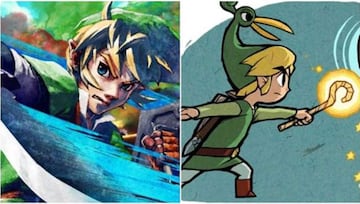
These are some of the games that precede the Nintendo 64 title, which is taken as the work in which they all revolve around it chronologically. We'll start with these for our "what order to play the saga":
- The Legend of Zelda: Skyward Sword
- The Legend of Zelda: Minish Cap
- The Legend of Zelda: Ocarina of Time
The Legend of Zelda: Skyward Sword
Our first proposal is to venture into Skyward Sword, the game that starts the whole universe of the saga. It appeared first on Wii, and recently in 2021 on Nintendo Switch. An interesting proposal because it tells us the origin of how universal elements of the saga are built. In fact, neither Hyrule nor the Master Sword exist in this game where combat is an essential element and motion controls, are a key part of its development.
Complementary games: Minish Cap. If you want to follow the unified line with more depth, we recommend the chronological order that follows the titles that are located before Ocarina of Time. The main one is The Minish Cap, with all the story related to the Four Sword, and with Vaati as the main enemy. More secondarily we have Four Swords, with an interesting local multiplayer component.
The Legend of Zelda: Ocarina of Time
The philosopher's stone of the entire saga and chronology, revolving around the Nintendo 64 masterpiece, is also available as a remake for Nintendo 3DS. It would be the next game to enjoy after the origins of the Zelda universe, so to speak. The title narrates the adventures of the hero of time, who travels seven years into the future to put an end to the greatest threat to Hyrule: Ganon. Despite being released in 1998, it is still quite relevant and is a demonstration of wit, good mechanics and splendid development. From this installment, the timeline is divided into three parts. But first, let's continue with what would be the direct sequel.
The Child Era Timeline
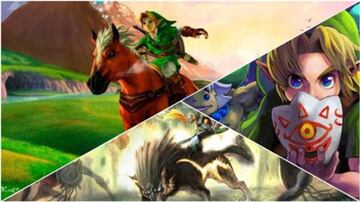
This is the first main line we are going to follow, starting with Ocarina of Time, followed by its direct sequel and the title that follows it in this section. It is the line of the hero of time who, after defeating Ganon, returns to his own time:
- The Legend of Zelda: Majora's Mask
- The Legend of Zelda: Twilight Princess
- The Legend of Zelda: Four Swords Adventures
The Legend of Zelda: Majora’s Mask
We follow the adventures of the hero of time, when Link fulfills his mission in the future, he is back in his time, where he marches with Epona to the unknown lands of Termina and Clock Town. Majora's Mask is a direct sequel -something unusual in the saga- with a development that differs from its predecessor. The engine is the same and the mechanics and actions are similar, but the system of secondary missions inside the city (Koizumi's work) and the dungeons outside with Link's varied transformations (Aonuma in charge) make this one of the most particular, dark and different Zelda. Especially because everything happens in a loop of 72 hours where we will have to navigate, move forward and back constantly. Also available on Nintendo 3DS with a version that improves graphically and streamlines some of the mechanics involved in the three-day system.
The Legend of Zelda: Twilight Princess
If we follow the Hero of Time's line, it is set dozens of years later with Twilight Princess. At that time, a Ganondorf possessing the Triforce of Power is sent to the twilight realm, from where he will try to reappear by allying with Zant, who has the task of merging that world with the world of light. A game considered by many to be the spiritual heir to everything we saw in Ocarina of Time, but with a larger scale and scope in almost everything and in which we will meet one of the best companions Link has ever had: Midna. The title has an HD version for Wii U, in addition to having been released on Game Cube and Wii.
With this series of games we finish the first line of The Legend of Zelda titles to play in order. You can add Four Swords Adventures in this line, although at the plot level it contributes little. At this point, we offer you the games to follow in the two other available timelines.
The Adult Era Timeline

This is the line of Adult Link, who manages to put Ganondorf away, returns to his own time and leaves that kingdom without a hero:
- The Legend of Zelda: The Wind Waker
- The Legend of Zelda: The Phantom Hourglass
- The Legend of Zelda: Spirit Tracks
The Legend of Zelda: The Wind Waker
The plot of The Wind Waker places us one hundred years after the events of Ocarina of Time. In the future of that game, Link defeats Ganon, returns to his own time and leaves that timeline without a hero. Among the details to know, the lack of a hero to fight the enemy returning from the dark forces the king of Hyrule to flood the entire world, burying the kingdom underwater and leaving the planet in a cluster of islands. A new hero will have to face Ganon when, at first, all he wants is to save his little sister.
Complementary games: Phantom Hourglass and Spirit Tracks. Wind Waker is the best game of the "toon" trilogy, so to speak. Anyway, if you are left wanting more in this timeline, Phantom Hourglass is a direct sequel in which we will take advantage of the Nintendo DS control (stylus, dual screen, microphone) in new adventures with Link. Spirit Tracks is set more than 100 years later, with the creation of a new Hyrule, with more elaborate puzzles but a less attractive world to explore because the means of transport is a train with its tracks and the limitations that this implies. This game ends this timeline.
The Hero is defeated Timeline
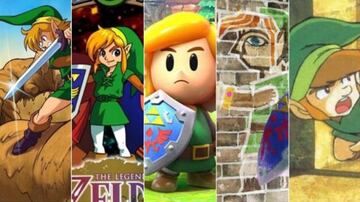
We enter the third timeline derived from Ocarina of Time: the one that assumes that Link loses to Ganon. This is the part with the most classic games of the saga, and in spite of it you will be able to enjoy authentic great games:
- The Legend of Zelda: A Link to the Past
- The Legend of Zelda: Oracle of Season/Ages
- The Legend of Zelda: Link's Awakening
- The Legend of Zelda: A Link Between Worlds
- The Legend of Zelda: Tri-Force Heroes
- The Legend of Zelda
- The Legend of Zelda II: Adventure of Link
The Legend of Zelda: A Link to the Past
One of the masterpieces of the Super Nintendo, also considered the best 2D Zelda for a large majority, begins this era of darkness. Ganon is revived and a young Link must stop him in a world halfway between Hyrule and the Dark World. The title is a display of ingenuity and a well-balanced challenge in which the adventure grows incessantly, with a large number of dungeons and trademark exploration.
The Legend of Zelda: Oracle of Season/Ages
After the Super Nintendo title, it's time for the two Game Boy Color games. These titles have the particular characteristic that their creation comes from Hidemaro Fujibayashi, who is currently the director of the series. Two games that connect between them, one focused more on action and the other more on puzzles, showing that Capcom had a very good hand with the license.
The Legend of Zelda: Link's Awakening
One of the most particular works of the Zelda saga. The first portable game of the franchise was born almost unintentionally, with a group of Nintendo workers who in their spare time were testing the options of having a portable A Link to the Past and ended up creating a groundbreaking title, with a plot and very interesting characters (Koizumi's work), a lot of humor and a world radically different from the one we knew, Koholint island. Its remake on Switch has shown that time has not passed in vain and remains a must in the series.
The Legend of Zelda: A Link Between Worlds
After the Oracle, and following the line of portable games, we have A Link Between Worlds, a title that uses the same map as in A Link to the Past but changes many things: absolute freedom to get key objects of the title and to overcome the dungeons of the game in the order we want. It was the first step in breaking the chains that finally disappeared in Breath of the Wild. If you are left wanting more mechanics of its style, there is Tri-Force Heroes, although it is totally secondary.
The Legend of Zelda
Many years later, an enemy attacks Hyrule and steals the Triforce of Power. To confront him, Zelda breaks the Triforce of Wisdom into eight pieces, and a hero has to rebuild it in order to take down Ganon on Death Mountain. Many of the basics of the series are seen here, albeit in a somewhat simpler way. A title that must be played once in a lifetime as it is the first of the saga and, despite being more than 30 years old, manages to maintain the level of mechanics.
Complementary game: The Adventure of Link. Considered one of the most difficult, even unfair in many moments, it is a direct sequel to The Legend of Zelda for NES. Our hero has to return to awaken Zelda from an eternal sleep, looking for six crystals that will allow him to reunite the Triforce. Only for the brave with time to spare.
The Legend of Zelda: Breath of the Wild Unified timelines?
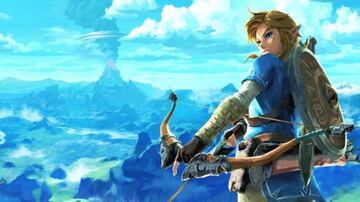
And we finish our route of how to play The Legend of Zelda with Breath of the Wild, the latest installment of the saga released on Wii U and Switch. It is recommended to be the last one because although it has no assigned timeline, it is like a reunification of all the paths followed; in the absence of knowing where its sequel, shown during E3 2021, but recently delayed until 2023, takes us. All in all, an open world game with absolute freedom to explore, overcome challenges and go for Ganon whenever we want, even at the beginning of the game. The world is full of details and locations reminiscent of all kinds of timelines and games. In fact, it mixes races that in theory have never been together (such as the Zora and the Rito). A game where legends, special places and constant tributes to a saga with almost 40 years of history come together.